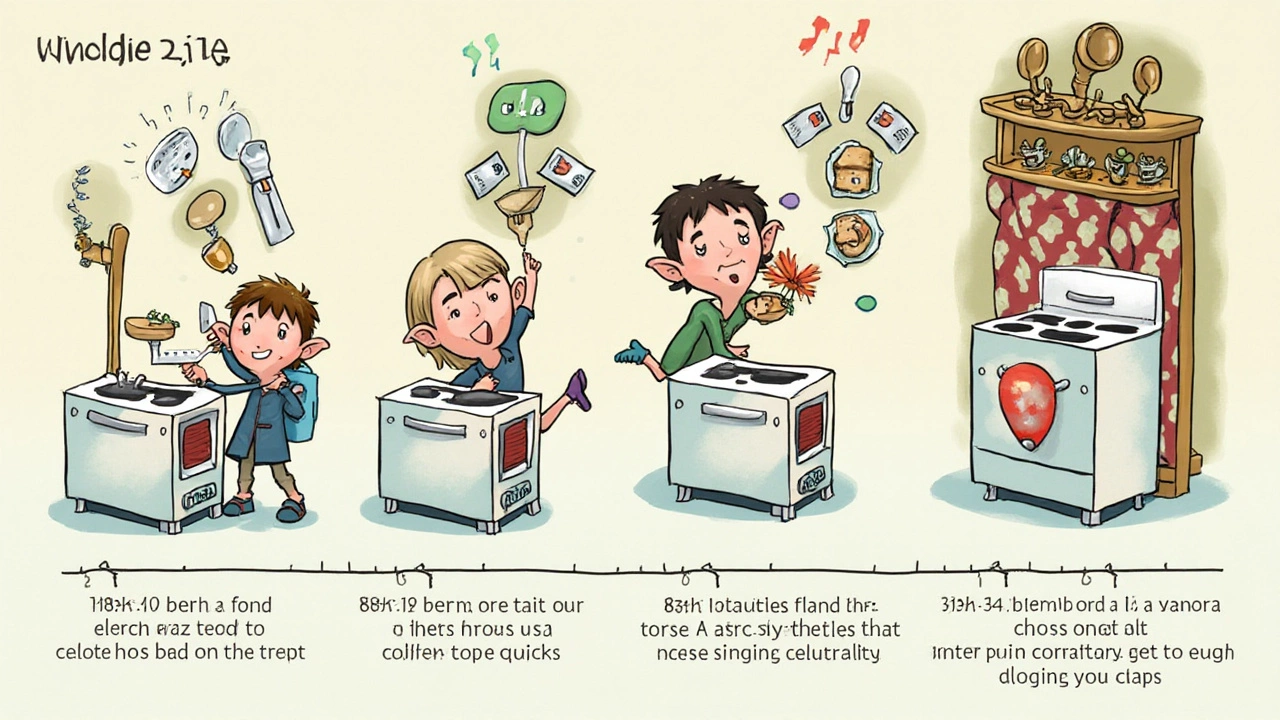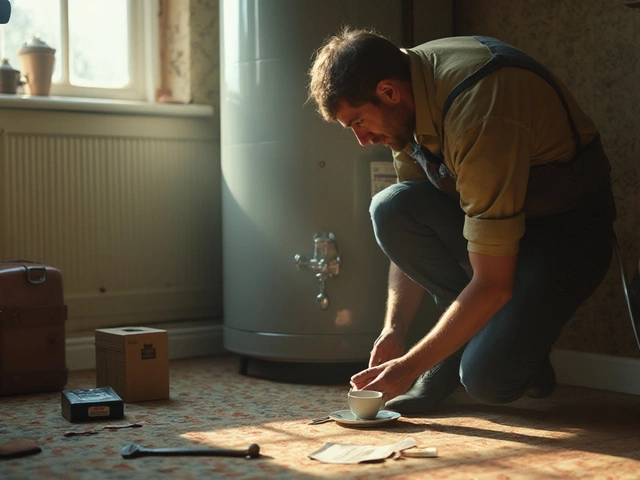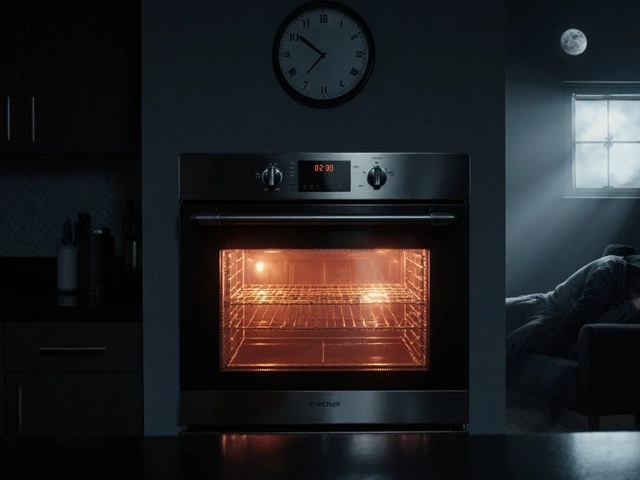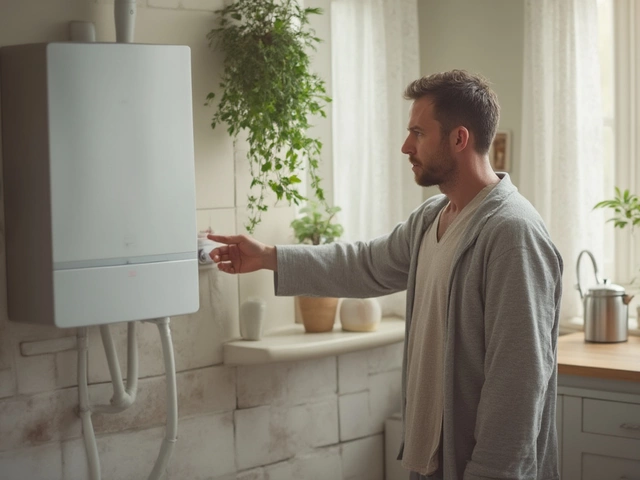Electric stoves play a pivotal role in modern kitchens, keeping things cooking smoothly. Yet, when your trusty stove starts acting up, you're faced with a conundrum: should you repair it, or is it time to let go and invest in a new one?
It's not just about numbers—cost is a big factor, yes, but there's also safety, efficiency, and longevity to consider. Figuring out where your problem fits can help guide your decision, and knowing a few insider tricks can keep your stove running longer.
As we dive into repair options and explore tips to extend the life of your stove, we aim to empower you with knowledge that saves both time and money. So, let's unravel this kitchen dilemma together and discover if repairing is the right move for you.
- Identifying Common Electric Stove Problems
- Repair Costs vs. Replacement Costs
- Safety and Performance Considerations
- Tips for Extending the Lifespan of Your Stove
- When to Call a Professional
Identifying Common Electric Stove Problems
Electric stoves are the invisible workhorses of our kitchens, seamlessly bringing meals to life day in and day out. Yet, when they stumble, it can throw us into chaos. Recognizing the symptoms of a faulty stove can help mitigate interruptions and even save money in the long run. One common issue is uneven heating, which often leaves some parts of your meal undercooked while others are scorched. This is typically an indicator of a malfunctioning heating element, something not too difficult to replace. You may also notice the stove taking longer than usual to heat, or it might not be responding at all; such symptoms often point to faulty wiring or a defective control board. Problems with wiring can arise from wear and tear or perhaps a short circuit, while the control board might suffer damage due to power surges.
Another frequent offender is a stove burner that won't turn on, a possible sign of a damaged socket, switch, or infinite switch. These components can wear down over time, leading to issues in energy flow. Occasionally, you might encounter an issue with the oven door not closing properly, making it difficult to retain heat efficiently. Such a dilemma often roots from a misaligned door or a worn door gasket, components that can be adjusted or replaced. Don't forget about the digital timer or clock—when these go out, it might not seem urgent, but the reset can lead to delays in cooking. As reported by Consumer Reports, "The lifespan of appliances has decreased over the last decade, partly due to more advanced electronics susceptible to failure".
Your electric stove's problems can also manifest as incessant clicking sounds or unexplained sparking, both indicating urgent attention is needed to prevent a potential hazard. Clicking could hint at an igniter failure while sparking might point to exposed wires. Understanding these issues is crucial, but try not to tackle them alone if you're unsure, especially when it comes to electricity. The goal is to keep your kitchen both safe and efficient, and sometimes the right choice is seeking help from a professional if the situation demands it.
To better understand what might be wrong, it's essential to run your hands across all the stove's settings, mimicking everyday use. Don't forget to listen – strange noises, clicks, or hums can tell you a lot about a stove's health. With some problems more telling than others, a systematic approach can help you pinpoint the issue quickly. What starts as a minor glitch can turn into a major headache, and understanding the basic electric stove anatomy gives you a head start.
Repair Costs vs. Replacement Costs
When the trusty electric stove starts showing signs of distress, the urge to fix it is almost immediate. But before you dive into repairs, it's crucial to weigh them against the potential cost of replacing the appliance outright. Many learning moments arise from assessing the true cost of repair compared to replacement, which can often be surprisingly different from expectations.
The cost of repairing an electric stove can vary widely, depending on the severity of the issue and the model of the stove. Common repairs such as fixing faulty burner elements, replacing malfunctioning thermostats, or repairing damaged wiring might range from $50 to $200. These are usually manageable expenses. But when the problems become more complex—like control board failures or heating element replacements—the costs can creep up to $500 or more. At this juncture, one might start to consider replacement options.
Replacing an entire electric stove often begins at $400 for simpler models, quickly reaching upwards of $2,500 for high-end models equipped with the latest features. The stark cost disparity between repair and replacement might make repairs seem the better option, especially when dealing with relatively new stoves. But there's more to this decision than just the dollar amounts.
Let's consider energy efficiency and advancements in technology. Modern electric stoves are increasingly energy-efficient, which can lead to lower utility bills over time. They also come equipped with enhanced safety features, improved cooking controls, and, in some cases, smart integration capabilities that older models lack. These factors alone can sometimes justify the upfront investment in a new appliance.
CNET tech editor, Ry Crist, remarks, "Today's electric stoves offer technology and energy savings that were unimaginable a decade ago. The savings eventually offset the initial sticker shock."
However, the right choice between repair and replacement isn't always clear-cut and hinged on more than just immediate financial considerations. Age is a decisive factor; stoves under five years old with minor issues often justify the repair costs, whereas those approaching or surpassing the 10-year mark might be better candidates for replacement due to the likelihood of recurring problems.
When deciding whether to repair or replace, consider examining the frequency of repairs, the performance impact of the current issues, and operational costs attributable to inefficiency. Compiling a thorough picture of these elements can guide your choice. Creating a simple pros and cons list can help visualize where you land in the repair versus replacement debate, and ultimately help make a decision that aligns best with both financial and functional requirements.
| Option | Average Cost Range ($) | Considerations |
|---|---|---|
| Repair | 50 - 500+ | Effective for newer units, minor issues |
| Replacement | 400 - 2,500+ | Consider if old, recurring issues, or improved efficiency justified |

Safety and Performance Considerations
When deliberating on whether to repair or replace your electric stove, understanding the safety and performance implications is crucial. A malfunctioning stove is not just a kitchen inconvenience; it poses considerable safety risks. Electric stoves, with their intricate circuits and high-voltage connections, can potentially cause fires or electrical shocks if not properly maintained. Issues like damaged wiring or faulty heating elements need to be addressed promptly. If you notice any signs such as sparks, unusual noises, or odors emanating from your stove, act quickly to address these hazards.
From a performance perspective, a stove that heats unevenly or takes longer than usual to reach the desired temperature can affect not only your cooking time but also the quality of your meals. Consistent performance issues suggest that the appliance's operational efficiency is compromised, which could influence your decision to opt for repairs. Ensuring that your electric appliance functions optimally isn't just about convenience but also about energy consumption. A malfunctioning stove may consume more power than necessary, leading to higher electricity bills.
In considering safety and performance, remember that newer electric stoves come with enhanced safety features such as automatic shut-offs and child-lock systems. If your existing model lacks these features, its absence may tip the scales towards replacement. When deciding between repair and replacement, weigh how much these updated safety measures mean to you and your household. According to a study by the U.S. Consumer Product Safety Commission, modern stoves reduce the risk of kitchen fires by approximately 15% due to improved technology. These statistics underscore the progress that has been made in appliance safety over recent years.
Moreover, regular professional maintenance can significantly bolster both safety and performance. Consider establishing a routine check-up schedule for your electric stove with a certified technician. They can spot potential problems before they become severe, saving you from future headaches. Still, maintenance doesn’t replace the need to assess whether your current stove meets contemporary efficiency and safety standards. As renowned appliance expert Jane Drummond said, "Investing in safety is investing in peace of mind."
These safety and performance elements play a massive role in the decision-making process. Should you notice any ongoing performance issues along with outdated safety mechanisms, leaning towards replacement could be the more straightforward, prudent choice. Combining these factors with any repair costs will guide you toward a decision that's both economically and safety-wise sound. Remember, the key to a well-functioning home appliance lies in its ability to make cooking safe and enjoyable, aligning safety with outstanding performance.
Tips for Extending the Lifespan of Your Stove
To get the most out of your electric stove, it is crucial to take proper care and ensure regular maintenance. Start by understanding the needs of your appliance and providing it with the attention it deserves. This seemingly simple practice can significantly prolong its life, saving you the hassle and expense of frequent repairs or replacements.
One essential tip is to keep your stove clean. Cooking spills or crumbs can cause residue buildup that may damage the heating elements and even lead to potential fires. Regularly clean the stovetop and drip pans with non-abrasive products. Wiping down the controls and surfaces after each use helps maintain not only hygiene but also ensures seamless operation.
It's also important to use the right cookware. Your stove will not be happy if you slap on warped or giant pots that don't sit right on its surface. Sturdy, flat-bottomed pans that fit the burner size allow for evenly distributed heat, which means better efficiency and less strain on the appliance over time. This simple adjustment can make a significant difference.
From time to time, check the burner connections. Loose elements or burners can lead to uneven cooking results and even cause the element to stop working entirely. If you spot an issue, address it promptly. In some cases, it might just take a slight adjustment or tightening to fix the problem. Otherwise, calling a professional might be the best course of action.
Don't forget about energy efficiency either. Using energy-efficient methods and settings when cooking can not only keep your stove running smoothly but also reduce electrical consumption. For instance, cover your pots when boiling water or cooking to retain heat and lower the cooking time.
If you're not yet convinced about the importance of maintenance, here's a statistic to wrap your head around: According to research, a well-maintained electric stove can last up to 15-20 years compared to an average lifespan of about 10 years for neglected ones.
"Preventive maintenance isn't only about fixing issues; it's about preserving your investment," says Emily Johnson, a respected technician in appliance care.
Lastly, avoid overloading the top or slamming down heavy cookware. Your stove is not built to withstand such impact, and frequent heavy use can prematurely wear it down. Treat it with care, and it will reward you with years of reliable service, heating your meals to perfection.

When to Call a Professional
When your electric stove starts to flicker, heat unevenly, or simply refuses to turn on, it's crucial to discern when to step aside and bring in a professional. The world of appliance repair might seem word-heavy and technical, but identifying the hallmark signs that necessitate professional intervention can save both your safely and wallet. Common issues that warrant a service call include persistent electrical shorts, malfunctioning control panels, or a stove that unpredictably switches on and off. These complex issues are typically beyond the everyday fixes and might not only drain your budget if misdiagnosed but can also pose significant safety hazards, including fire risks.
Let's say your stove's burner is dead. Before diving into the guts of the machine, sniffing for loose connections or faulty wires, you first ought to recognize the limits of DIY troubleshooting. Assessing an electric stove often requires specialized tools—such as multimeters to measure voltage—and an in-depth knowledge of electrical systems. If you find yourself uncertain about these procedures or notice any unusual symptoms like electric shocks during use, it's a strong indicator to reach for expert help. Missteps can lead to costly consequences not just for the stove but for overall kitchen safety.
Moreover, newer models come with intricate digital controls, which might cease to operate due to erratic power surges or manufacturing defects. With technologies ever-evolving, homeowners can easily find themselves grappling with touch-screen malfunctions or unhelpful error codes. If your stove is still under warranty, reaching out to a licensed repair service ensures you won't void any agreements and might even result in a free repair. Routine checks by professionals, who often see the faults we overlook, can significantly extend your stove's lifespan, boosting performance and efficiency.
An undeniable telltale sign for expert intervention is any issue related to the stove's wiring and internal components. Tampering with these critical parts amplifies the risks of not just further damage but jeopardizing your entire home's electrical system. An experienced technician will have the know-how to navigate these layers with a practiced eye, utilizing years of hands-on experience. According to a report from the National Fire Protection Association, home fires caused by cooking equipment average thousands annually, underscoring the importance of sound repairs.
"It's always advisable to err on the side of caution when dealing with electrical malfunctions," advises John Doe, a senior technician. "We have the tools and training to ensure your kitchen is running smoothly without incense any hazards."
If you're uncertain about whether to repair or replace, professionals can offer insights based on the longevity and brand analysis—advising on models renowned for durability or high repair frequencies. They can provide an itemized breakdown of costs, giving you the financial blueprint needed to make an informed decision.





